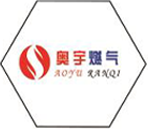
Dec . 01, 2024 14:17
Back to list
Natural Gas Pressure Regulation Station for Safe Distribution and Efficient Management
The Importance of Natural Gas Pressure Reducing Stations
Natural gas plays a crucial role in the global energy landscape, serving as a primary fuel source for electricity generation, heating, and industrial processes. With the increasing demand for natural gas, the infrastructure supporting its distribution needs to be robust and efficient. One critical component of this infrastructure is the natural gas pressure reducing station (PR station). This article explores the significance, functionality, and components of natural gas pressure reducing stations, highlighting their role in the safe and efficient delivery of gas.
Function and Importance
Natural gas is transported through pipelines under high pressure, which ensures that it can cover long distances efficiently. However, residential and commercial end-users require gas at much lower pressures. This is where pressure reducing stations come into play. Their primary function is to lower the high pressure of the gas coming from transmission pipelines to a suitable level for distribution networks or end-users.
Maintaining appropriate pressure is vital not only for the efficient operation of gas appliances but also for safety. If gas is delivered at too high a pressure, it may lead to leaks, equipment damage, or even hazardous explosions. Thus, PR stations are essential in mitigating risks associated with gas supply and ensuring customer safety.
Components of Pressure Reducing Stations
A standard natural gas pressure reducing station comprises several key components
1. Pressure Regulators The heart of any PR station, pressure regulators are responsible for controlling and maintaining the desired outlet pressure of the gas. They adjust the flow of gas based on the pressure differential between the incoming gas and the desired pressure level.
2. Filtration Systems To protect the pressure regulators and other downstream equipment, filtration systems are integrated into PR stations. These filters remove particulates, dust, and moisture from the gas, which can interfere with equipment operation and lead to inefficiencies or failures.
3. Safety Devices Safety is paramount in gas distribution. PR stations are equipped with various safety devices, including pressure relief valves and alarms. These mechanisms ensure that if the pressure exceeds safe levels, gas can be safely vented or contained, preventing potential hazards.
natural gas pressure reducing station

4. Flow Meters Monitoring the volume of gas flowing through the station is essential for operational and billing purposes. Flow meters provide accurate measurements, allowing operators to track consumption and manage supply effectively.
5. Control Systems Advanced PR stations often incorporate automated control systems that monitor pressure levels in real-time. These systems can adjust pressure settings and provide alerts for any abnormal conditions, enabling proactive maintenance and response.
Operational Efficiency
When PR stations are properly maintained and operated, they can significantly enhance the overall efficiency of the gas supply system. Regular inspections and maintenance ensure that all components are functioning optimally. In today’s technology-driven landscape, predictive maintenance using data analytics can provide insights into potential issues before they arise, further improving reliability.
In addition, modern PR stations are designed with energy efficiency in mind. By optimizing gas pressure levels, they reduce the energy required for transportation and heating, contributing to lower operational costs and reduced environmental impact.
Future Trends
As the world shifts towards cleaner energy sources, the role of natural gas in the energy mix continues to evolve. Pressure reducing stations will need to adapt to new challenges, such as handling biogas blends or hydrogen-enriched gases. To meet the increasing regulatory demands for sustainability, operators will look for opportunities to enhance the efficiency of these stations further.
Moreover, the integration of smart technology and IoT (Internet of Things) devices into pressure reducing stations will likely become more prevalent. This advancement can provide operators with real-time data for better monitoring and control, making the system more resilient against fluctuations in demand and disruptions in supply.
Conclusion
Natural gas pressure reducing stations are a vital part of the energy distribution network, ensuring safe and efficient delivery of gas to consumers. By regulating pressure, filtering impurities, and providing crucial safety features, these stations enable the reliable operation of the gas supply system. As we move towards a more sustainable energy future, the importance of these stations will only grow, necessitating continued innovation and efficiency improvements in their design and operation.
Next:
Latest news
-
Safety Valve Spring-Loaded Design Overpressure ProtectionNewsJul.25,2025
-
Precision Voltage Regulator AC5 Accuracy Grade PerformanceNewsJul.25,2025
-
Natural Gas Pressure Regulating Skid Industrial Pipeline ApplicationsNewsJul.25,2025
-
Natural Gas Filter Stainless Steel Mesh Element DesignNewsJul.25,2025
-
Gas Pressure Regulator Valve Direct-Acting Spring-Loaded DesignNewsJul.25,2025
-
Decompression Equipment Multi-Stage Heat Exchange System DesignNewsJul.25,2025

